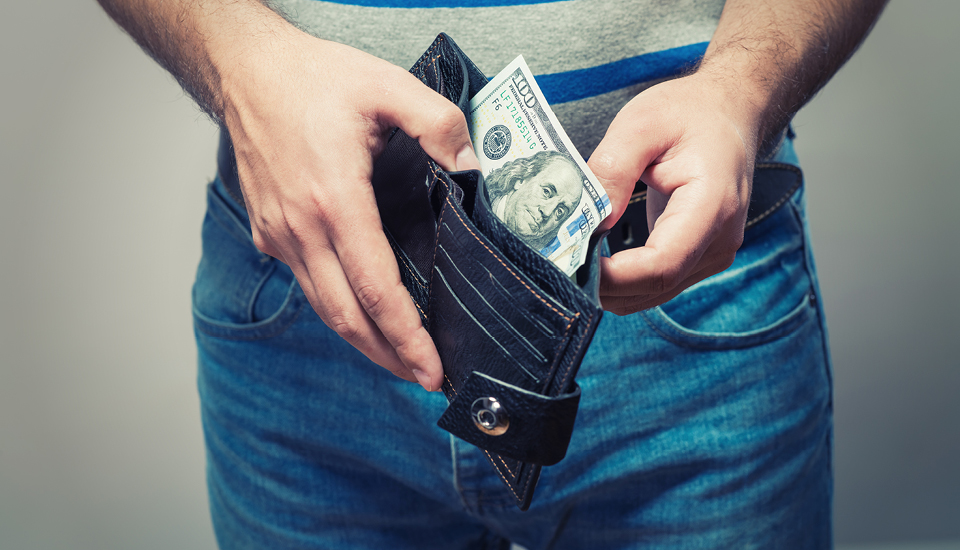A bit on how it works: Financial guru Dave Ramsey created the debt snowball method. The plan helps you tackle your smallest debt first and make minimum payments on any others. From there, you’ll snowball, or roll, the amount you were paying on your smallest debt onto the next largest.
The debt snowball method differs from concepts like debt avalanche, where you pay off high-interest debt first and make minimum payments on others, and debt consolidation, where you combine multiple debts into one with a lower rate so you can make more affordable payments.
Debt management may also be used if you find your debt overwhelming. A nonprofit credit counselor could help you come up with a lower-rate repayment plan.
Why do debt snowball? Over 74 percent of American workers live paycheck to paycheck. But by staying consistent, some people – like this woman who dreamed of being debt-free by 30 – have used the debt snowball plan to pay off upwards of $130,000 and make their dreams of homeownership a reality.
Fund your future: Master the debt snowball method in 4 steps
Doing debt snowball takes some patience but only requires four steps:
1. List non-mortgage debts from small to large, not factoring in interest.
Example:
- Medical bill – $460
- Amex credit card – $2,000
- Visa credit card – $2,500
- Car loan – $7,000
- Student loan – $20,000
Total: $31,960
2. Make the minimum payment on all debts, excluding the smallest.
Example:
Medical bill – $38 minimum payment- Amex credit card – $50 minimum payment
- Visa credit card – $63 minimum payment
- Car loan – $135 minimum payment
- Student loan – $400 minimum payment
Total: $648 per month.
3. Pay as much as you can on your smallest debt.
Example:
• Medical bill – $460
Total: $648 per month for minimum balances + any extra funds toward total medical bill balance.
4. Repeat the process until you pay each debt completely.
Month 1-3 example:
- Medical bill – $0
- Amex credit card – $50 minimum payment
- Visa credit card – $63 minimum payment
- Car loan – $135 minimum payment
- Student loan – $400 minimum payment
Total: $648 per month.
Months 3-12 example:
- Medical bill – $0
- Amex credit card – $0
- Visa credit card – $63 minimum payment
- Car loan – $135 minimum payment
- Student loan – $400 minimum payment
Total: $598 per month.
Months 12-18 example:
- Medical bill – $0
- Amex credit card – $0
- Visa credit card – $0
- Car loan – $135 minimum payment
- Student loan – $400 minimum payment
Total: $535 per month.
Your debt’s under control, and now you’re sitting on some cash. Find out if you have enough for a down payment.
Continue at this pace until you’ve reached that coveted debt-free state. Even with significant student loan debt and interest, some debt snowballers have used the plan to zero out balances of more than $55,000 in under three years.
Using this helpful method, even the estimated $1.76 trillion in student loan debt won’t hinder most homebuyers. It’s true that rising tuition costs have contributed, at least in part, to a drop in young homeownership. The high price of education has blocked some younger buyers from being able to afford the same type of house their grandparents and parents did at their age.
But according to the Federal Reserve’s findings on the impact of student loan debt on millennial (ages 18 to 34) homeownership rates:
“Every $1,000 in student loan debt delays homeownership by about 2.5 months, but it doesn’t prevent homeownership entirely.
In fact, by the time college grads reach their 30s, those with student loan debt have a homeownership rate nearly identical to those who didn’t take out loans.”
The Wall Street Journal also covered the Fed report, noting that new graduates who want to become homeowners still prioritize paying down student loan debt over saving up for a down payment. Many student loan debtors, understandably, would rather “get that monkey off (their) back (before they) make any new investments.”
Still, this is only a delay. Millennials Now Make Up More than 40% of Homebuyers:
Despite being the generation with the most student debt, Millennials now make up 43% of homebuyers – the most of any generation – up from 37% in 2020. Many who earned a bachelor’s degree after high school are just a year or two away from paying off their student loans by the time they turn 30. They may also have been working long enough to start netting a higher salary in their career. Research supports the fact that having a bachelor’s or higher level of education increases the chances of becoming a homeowner.
Less debt = More money for a down payment
You might not notice how simple it is to save for a down payment on a house — because you’ve been so used to paying high-interest debt. Now’s the time to put your money to work for you and put it toward a safe long-term investment. As a new homebuyer, your monthly mortgage may cost less than or equal to what you were paying in rent. Click here to get prequalified.
For educational purposes only. Please contact a qualified professional for specific guidance.
Sources are deemed reliable but not guaranteed.

